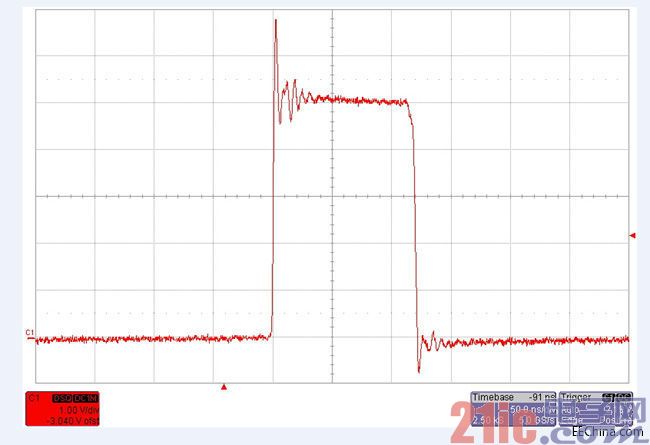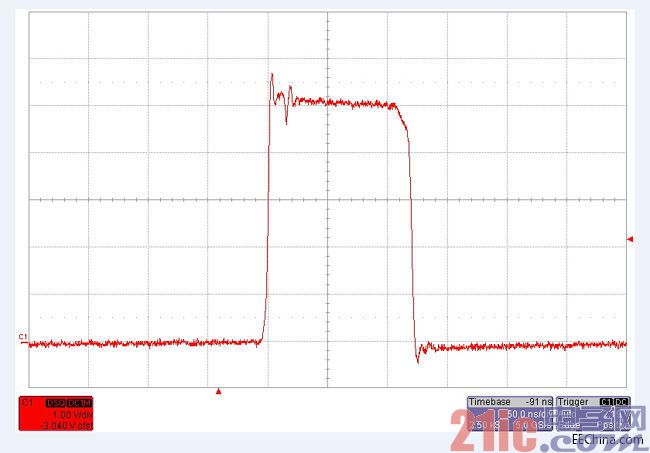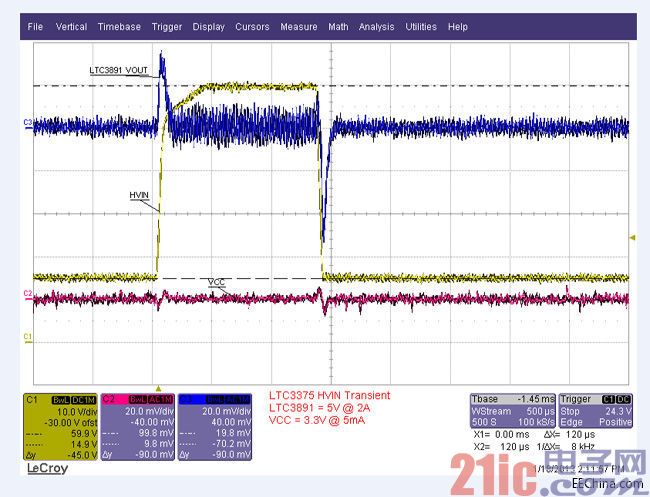The design of electronic systems for automotive applications is challenging for a number of reasons: space is limited; the operating temperature range must be broad; noise must be suppressed as much as possible; battery transients must be withstood and the quality level must be high. Since the integration must be high to compress the board area, this requires a very power efficient component. In many applications for automotive applications, there are stringent EMC requirements that cover both radiated and conducted emissions, resistance to radiation and conduction or sensitivity, and electrical discharge (ESD). For potential multi-channel IC designs, meeting all of these requirements will affect many aspects of performance. Some are simple and straightforward to satisfy, such as requiring a DC-DC switching regulator to operate at a fixed frequency outside of the AM radio band. However, some are more difficult to deal with, such as adjusting the slew rate of the internal power FET to minimize the radiation emission caused by the switching node switching of the DC-DC converter.
This article refers to the address: http://
As development progresses, "feature creep" (ie, changes in product specifications, such as input and output voltages, and output current parameters) can have serious adverse effects on the choice of ICs and related discrete components. In the best case, when a system specification changes after the board layout is scheduled, it is possible to fine tune a voltage by replacing several resistors on the adjustable output converter. In the worst case, it may be necessary to replace multiple active ICs with ICs that are not compatible with the pinout because the new output current level requirements exceed the switch current ratings of these active ICs. This will result in a series of cost increases and schedule delays due to the redesign and layout of the boards. To do this, a highly dedicated, high-performance configurable power management IC is needed to properly manage the power modules, ensuring that all of the system's performance benefits are met and providing flexibility for unavoidable power module system changes.
a simple solution
In the past, many multi-output PMICs did not have the flexibility necessary to handle such new systems. Any solution that meets the above automotive power management IC design constraints must combine high integration, wide operating temperature range, and high flexibility, with high integration including integrated current-mode buck switching regulators and low-voltage features. . What the designer needs is a multi-channel, configurable DC/DC converter.
Flexible Octal Buck Regulator
The LTC3375 is a highly integrated, universal power management solution for systems that require multiple low voltage supplies. With eight independent 1A channels, the device offers I2C control, flexible sequencing and fault monitoring in a compact QFN package. It also includes eight internal compensation, high efficiency synchronous buck regulators and a high voltage linear controller that is always on. Each buck regulator has its own independent 2.25V to 5.5V input supply with an output voltage range of 0.425V to VIN. The device's button ON/OFF/RESET control, power-on reset, and watchdog timer provide flexible and reliable power-up sequencing and system monitoring. The LTC3375 features a programmable and synchronizable 1MHz to 3MHz oscillator with a default switching frequency of 2MHz. When all DC/DC is disconnected, the quiescent current is only 11μA, saving power in the system that is always on. The device is suitable for a wide range of multi-channel applications, including industrial, automotive and communications systems.
The LTC3375's eight buck converters can be used individually or in parallel to achieve a large output current of up to 4A per output with a single shared inductor. Since there are up to four adjacent regulators that can be connected in parallel, there are 15 different output configurations. These regulators have two modes of operation: Burst Mode operates at power-on defaults to provide higher efficiency at light loads; forced continuous PWM mode enables lower noise at light loads.
The I2C interface can be used to select the operating mode, phase, feedback regulation voltage, and switching slew rate. These buck regulators provide forward and reverse current limiting, soft-start limiting inrush current during startup, short-circuit protection, and slew rate control for low radiated EMI. Other features include a chip temperature monitor output (which can be read via I2C) and a chip temperature (DT) alarm function that indicate the internal chip temperature. This function alerts the user when the chip temperature reaches its set alarm threshold, thus allowing the system Take corrective action. The LTC3375 is available in a high temperature (H grade) version with a rated junction temperature range of -40°C to +150°C, making it easy to meet automotive high temperature operating requirements.

Figure 1: Simplified block diagram of the LTC3375 4A/3A/1A three-output configuration.
Suppress radiation and conduct EMI
The LTC3375 PWM switching frequency is specifically trimmed to 2MHz with a 400k RT resistor, with a guaranteed 1.8MHz to 2.2MHz range. The RT resistor can be used to set any operating frequency from 1MHz to 3MHz. These regulators can also be set to force a continuous PWM mode of operation to prevent operation in burst mode even at light loads. This not only maintains a fixed frequency, but also reduces the voltage ripple on the DC-DC output capacitor. In addition, the LTC3375 can be synchronized to an external 1MHz to 3MHz clock through the SYNC pin to further reduce system noise.
To specifically reduce radiated EMI, the LTC3375 also offers a special feature that allows the user to reduce the switching edge rate of change. The LTC3375 also provides additional tools to suppress power supply noise. The slew rate of the switch on the buck regulator can be adjusted by I2C. Because these buck regulators are synchronizable, both the fall and rise times can be extended. Figures 2 and 3 show the switching curves for the rise and fall of full speed and deceleration, respectively.

Figure 2: Bucking regulator switching curve with 2MHz full-speed rising and falling.

Figure 3: Bucking regulator switching curve with 2MHz deceleration rising and falling.
Anti-extreme voltage offset
Another obstacle that automotive electronics needs to overcome is the drastic changes in battery voltage, as low as about 5V when the cold car is running, or high voltage spikes that can generate very high voltages. Automotive electronics not only have to withstand these harsh voltage changes, but they also need to work continuously. The LTC3375 features a push button controller and an external path FET regulator that can be used to power an external high-voltage buck regulator, which then supplies the LTC3375 with a safe and stable voltage (see Figure 4).

Figure 4: LTC3375 high voltage transient performance.
in conclusion
The car dashboard is full of noise-sensitive and temperature-sensitive sources, making IC design much more difficult. Dramatic changes in battery voltage present another challenge. Despite these obstacles, technological advances in the functional components of automotive infotainment systems, such as satellite radios, touch screens, navigation systems, Bluetooth, and high-definition television, can still enhance the driving experience of modern cars. Replacing many discrete power IC components or traditionally very large, over-integrated PMICs with Linear Technology's very easy-to-configure LTC3375 single multi-output 8-channel buck IC, system designers can integrate critical power into the system
Multi-Port Hub,20 Port Charger,Usb Charger Station,20 Port Usb Hub
shenzhen ns-idae technology co.,ltd , https://www.szbestchargers.com
![<?echo $_SERVER['SERVER_NAME'];?>](/template/twentyseventeen/skin/images/header.jpg)